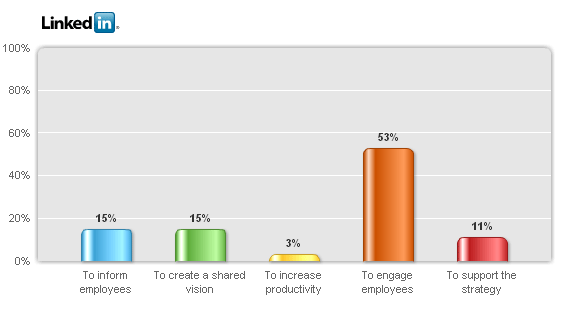Some interesting posts over what for us in the UK was an Easter Bank Holiday weekend, on E2.0, its progress and and its ROI. The discussions all centred the long roasted meme of when, when and what for Enterprise 2.0 will truly come kicking and screaming into the business world.
Trough of 2.0?
For example, Hutch Carpenter reckons we’re quite likely in the Gartnerian Trough of Disillusionment where the purported gains of 2.0 seem a far off promised land and any real gains, mere milk and honey of the mind. Nonetheless:
What gives me comfort is that the Hype Cycle provides a fairly well-known model for how technology ultimately becomes core to the way businesses do work. So let the analysis show that Enterprise 2.0 cannot, in fact, solve every problem that companies have.
ROI of 2.0?
Dion Hinchcliffe asks the question of how do we determine the Enterprise 2.0 ROI and starts of by citing Andrew McAfee’s piece from a couple of years or so back, The Case Against the Business Case. Here Andrew points to the intangible nature of the gains and points to a “costs required to acquire capabilities” model as being far more preferable.
Dion is keen to stress that he does see actual gains, but asks if Enterprise 2.0 truly strategic in the unique way that information technology can so often be? Pointing out that a third of companies (globally?) are already using 2.0 tools in one shape or another, Dion argues that they will see gains, but that:
Innovation often comes from where you least expect it and harnessing collective intelligence, the core principle of Web 2.0 as well as Enterprise 2.0, is the very art of eliciting value from emergent systems such as the Web and our intranets.
Why?
One aspect I think is interesting in all of this (amongst so many interesting ones), is this question of ROI itself – the why are we doing it? It’s similar in some ways to the discussion sparked off by my LinkedIn poll on ‘what’s the single most important aim of internal communications?‘. One could phrase this as are we there to just do some good, or to prevent a bad from happening, or can internal communications all be seen in the sense of the bottom line, the drive for profit?
Kicking butts
Indeed, for companies Motorola are all too clear on why they’re using social media:
“I don’t beat Nokia or Cisco or Siemens by having better buildings or shinier cafeterias. Companies are human beings solving problems or responding to crises by working with each other. If you can make your company less of a top-down company at a higher speed than your competition, you have just kicked their butts.”
Motorola VP Toby Redshaw.
Thinking inside a box
Profit is (for once literally) the bottom line yet for a business in contemporary capital it cannot be a single strive for it. It has to be a combination of elements. I tried to combine how these might function together for internal comms as so:

I wonder if it’s worthwhile to start to frame E 2.0 into the wider cultural frame. If we’re talking of Enterprise 2.0 ROI then the pattern might shift and the business element play a more pivotal role – perhaps Engagement comes Innovation – I’m not sure and need to mull on this more. What I don’t think we can avoid is the question of the Enterprise 2.0 ROI.
Post script on Red Herrings
I hope you like my Photoshop of some red herrings – I was going to call this post “2.0: ROI, the red herring that has yet to be caught!” Maybe I’ll return to that, as I originally tried to cover far too much for a bear of little brains to write in one post. There’s some snippets on the cutting room floor I will return to, esp about the’ Q of impossibility of cultural change’.


